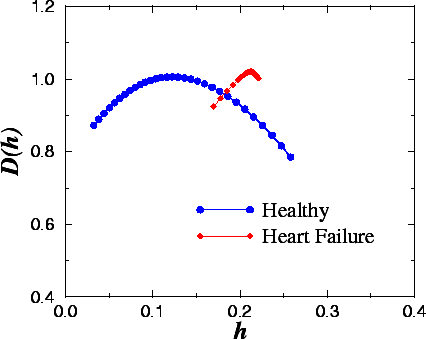Part 6: Multifractality of healthy human heart rate
Multifractality has been uncovered in a number of fundamental physical and chemical processes (9). Recently, it was also reported that heart rate fluctuations of healthy individuals are multifractal (11). This finding posed new challenges to our understanding of heart rate regulation as most modeling of heart rate fluctuations over long time scales had concerned itself only with monofractal properties (12). For example, it appears that a major life-threatening condition, congestive heart failure, leads to a loss of multifractality (Fig. 8).

| Previous: Part 5: What one learns from the singularity spectra of multifractal signals |
Next: Bibliography
|